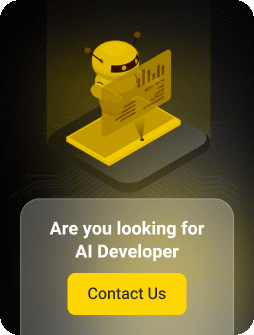Professors, teachers, and professionals are increasingly grappling with a new challenge: the rise of AI-generated content.
As advanced tools produce essays, reports, and creative projects in mere seconds, the ability to verify whether submitted work is genuinely human-written has become more difficult, and frustrating.
To tackle this issue, many turn to AI content detection tools that promise to identify machine-generated text.
But can these tools deliver on their promises? Do they accurately detect AI-generated content, or do they come with flaws that complicate the process even further?
Let’s find out. This article takes a closer look at their capabilities and limitations to uncover how well they really work.
What Are AI Detection Tools?
AI detection tools are software designed to identify if content, like text or images, was created by artificial intelligence. These tools analyze patterns and features in the content to determine its source.
For text, AI content detectors examine things like sentence structure and word usage. For images, they look for details that might reveal the use of AI. These tools help people verify whether something was created by a person or generated by a machine.
Educators, businesses, and online platforms use AI detection tools to ensure authenticity and maintain trust in the content they review.
How Do AI-Powered Detection Tools Work?
AI-powered detection tools rely on four key principles to function effectively: classifiers, embeddings, perplexity, and burstiness.
1. Embeddings
Embeddings form the foundation by converting raw data into numerical representations within a high-dimensional space. This mathematical encoding allows the AI to process, compare, and understand relationships between data points, much like a decoder for complex information.
2. Classifiers
Building on embeddings, classifiers act as the decision-makers. They analyze the processed data, identifying patterns to categorize inputs. Whether distinguishing AI-generated text from human writing or flagging anomalies in images, classifiers excel at spotting the telltale signs embedded in the data.
3. Perplexity
Perplexity introduces a deeper layer of analysis. It measures how predictable a sequence of data is, revealing whether the content follows systematic AI-like patterns or the natural variability of human creation.
4. Burstiness
And finally, burstiness. Where variations are examined in complexity and structure. Humans tend to alternate between intricate and simple expressions, creating bursts of creativity, while AI outputs are often uniform. This fingerprint of inconsistency, or lack thereof, offers a critical clue in detection.
Artificial Intelligence Expertise blends precision and adaptability, making them indispensable for understanding the origins and patterns hidden in data.
Top 5 AI Detection Tools Trusted by Educators and Professionals
AI detection tools offer reliable solutions, ensuring authenticity through innovative features tailored for real-world applications. Here are the best tools for AI content detection available for use right now:
Copyleaks AI Content Detector
Copyleaks stands out for its ability to detect AI-generated content across multiple languages, including English, Spanish, French, and more. This capability is particularly beneficial for educators and professionals working in diverse linguistic contexts. What truly sets Copyleaks apart is its intelligent highlighting feature, which pinpoints sections of text likely crafted by AI. This functionality doesn’t just flag content, it provides actionable insights into which parts need closer scrutiny. Its seamless integration with learning management systems like Canvas and Blackboard makes it a top choice for academic institutions. As AI evolves, Copyleaks continues to push boundaries, even detecting paraphrased AI-generated text, a common method used to bypass detection.
GPTZero
GPTZero has quickly become a favorite among educators for its comprehensive analysis. Unlike other tools, it evaluates AI’s influence across sentences, paragraphs, and the entire document. One of GPTZero’s defining features is its ability to interpret results in a clear, descriptive format rather than providing only numerical scores. This makes it user-friendly, especially for educators who may not be tech-savvy. GPTZero’s strength lies in its sharp focus on English texts, delivering reliable results for essays, reports, and other academic work.
Winston AI
Winston AI is a carefully crafted Artificial Intelligence Solutions, specifically for educational and publishing needs, offering unparalleled accuracy for detecting AI in student work and manuscripts. One of its standout features is Optical Character Recognition (OCR), which enables it to analyze text from scanned documents and even handwritten notes. Educators benefit from Winston AI’s ability to detect AI involvement in multiple languages, including French, and its intuitive percentage-based scoring system. Whether verifying assignments or reviewing manuscripts, Winston AI delivers precise insights tailored to educational contexts.
Crossplag
Crossplag is designed with user-friendliness in mind, making it an excellent choice for educators who value simplicity without compromising accuracy. Its interface is intuitive, allowing users to analyze text quickly and efficiently. This tool goes beyond basic detection by offering deeper analysis into text structures, ensuring more precise results. Crossplag’s cross-lingual capabilities make it a versatile solution for global classrooms, although its AI detection currently focuses on English.
WriteHuman's Trusted AI Detector
WriteHuman, renowned for its expertise in crafting undetectable AI, now introduces its groundbreaking AI detection tool. This innovative solution combines years of AI development with a user-friendly design, making it an invaluable resource for identifying AI-generated content with precision. WriteHuman’s detector is engineered for unparalleled speed and precision, setting a new standard in AI detection. It’s designed to keep users ahead in a world where AI technology evolves rapidly, ensuring reliable results with every scan.
Each of these tools addresses a specific challenge posed by AI-generated content. As AI technology continues to advance, these tools are trying to stay ahead, ensuring they remain allies in the fight against content manipulation.
The Reality of AI Detection Tools - Accuracy Isn’t Absolute
AI detection tools often market themselves with claims of near-perfect accuracy, some boasting figures as high as 99%, but they’re not. While these tools are undoubtedly innovative and valuable, it’s crucial to understand their limitations. No matter how precise they appear on paper, they are not flawless, and relying on them alone can lead to significant errors and unfair conclusions.
Acknowledging the Flaws
Ironically, many tools that claim high accuracy rates also include disclaimers stating they should not be the sole basis for decision-making. They advise against using their results to grade assignments or make definitive judgments. This is a clear acknowledgment from developers that their tools are supplementary aids, not arbiters of truth.
Why Overreliance on Detection Tools Is Risky
Blindly trusting these tools risks undermining fairness and accountability. Imagine penalizing a student for AI involvement based solely on detection results, only to discover their work was entirely original. Similarly, in professional settings, wrongful accusations of AI use can damage reputations and erode trust.
A Balanced Approach Is Essential
AI detection tools are best used as part of a broader evaluation process. Treat them as supporting evidence rather than definitive proof. Pair them with human judgment, thorough content review, and context-specific insights to arrive at fair and accurate conclusions.
Why AI Detection Tools Struggle to Be Fully Accurate?
AI models like GPT-4 and beyond are constantly improving, producing content that is increasingly indistinguishable from human writing. They can mimic natural tone, creativity, and style to an extent that even the best detectors struggle to differentiate. Detection tools operate based on algorithms trained on specific datasets, but AI-generated content often surpasses these parameters, exploiting gaps in the detection models.
How to Test AI Detection Tools: A Step-by-Step Guide
If you’re curious about the accuracy of AI detection tools, conducting your own test is a straightforward way to evaluate their performance. Follow these steps to get started:
Step 1: Choose a Detection Tool
Begin by selecting an AI detection tool that aligns with your needs. Some popular options include Copyleaks, GPTZero, or WriteHuman. Ensure the tool you choose is accessible, user-friendly, and capable of handling the content type you wish to test (e.g., essays, articles, or reports).
Step 2: Find Pre-2015 Text
Next, locate an article, news piece, or academic text written before 2015. Why this specific timeline? Most modern AI models, like GPT, weren’t trained on content from before that period. This makes pre-2015 text an ideal baseline to test the detector’s ability to identify genuinely human-written work. Sources like archived articles, books, or older research papers are excellent options.
Important Note: Be sure the text is untouched by AI-generated revisions or re-publications to maintain authenticity.
Step 3: Input the Text into the Tool
Once you have your chosen text, copy and paste it into the AI detection tool’s interface. Many tools have straightforward instructions or fields where you can upload text or documents directly. Ensure the text length fits within the tool's word limit to avoid errors.
Step 4: Analyze the Results
Run the detection test and wait for the tool to analyze the content. Most AI detectors will provide a report highlighting the likelihood of AI-generated content, often with percentages or specific flagged sections.
Step 5: Interpret the Results
Pay close attention to the tool’s output. If it falsely flags pre-2015 text as AI-generated, this suggests the detector struggles with older writing styles or cannot effectively differentiate human-authored work. Consider testing multiple tools for comparison to get a more comprehensive understanding of their reliability.
Testing AI detection tools this way not only helps you gauge their accuracy but also equips you with insights into their limitations.
Final Thoughts - AI Content Detection Tools
The bottom line? AI detection tools, while impressive and often marketed as highly accurate, are not flawless. Their results should be taken with caution and never relied upon as definitive proof. Question their findings, understand their limitations, and use them as part of a broader evaluation process. Ultimately, the responsibility for interpreting and assessing content rests with the user, not the algorithms. Human judgment remains irreplaceable in ensuring fairness and accuracy in any evaluation.













